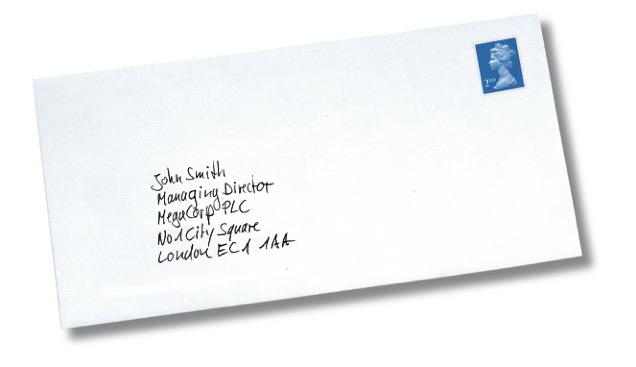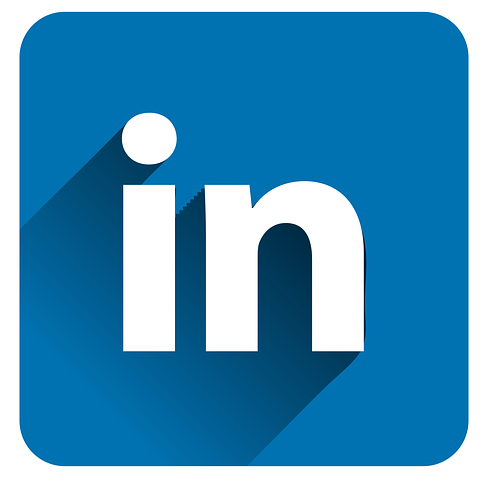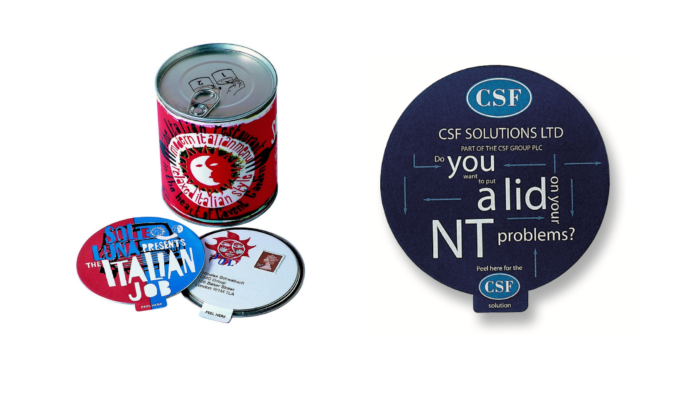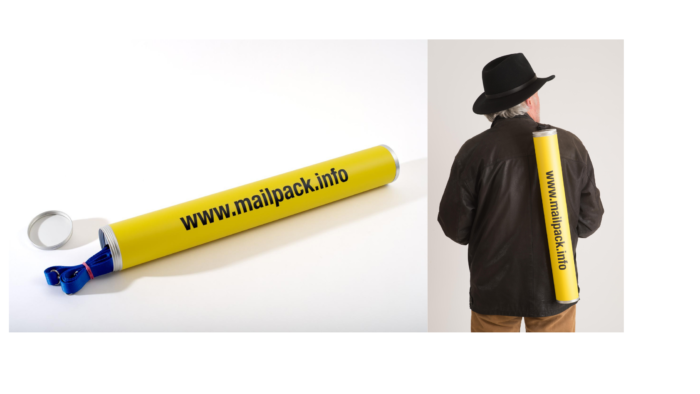As email inboxes become increasingly congested, carefully targeted campaigns using direct mail can cut straight through to prospects. Industry pioneer, Nicolas Schwabach, makes the case for direct mail and provides tips on how to do it right and get results.
Direct mail will never die because of the prohibitively high cost of trying to connect with new prospects by phone – or online.
To put this into hard figures, if a B2B telesales person makes 100 calls a day and only persuades 1 prospect to meet, this typically works out at £280 per meeting – or £28,000 to generate 100 appointments.
There are four ways to cut this appointment cost to the bone:
1: Identify who is actively looking for your product or service
2: Use direct mail (make sure your messaging is spot on)
3: Use a warm-up mailer to improve your telesales efficiency
4: Plug your website’s “holes” to make sure your direct mail performs
1. Identify named individuals who are actively looking for your product or service
Do this right, and three-quarters of the battle is won. One way to identify potential prospects is by unlocking your competitor’s database – legally – to identify what named individuals want to buy right now.
In days gone by, casino owners would get the names and addresses of high rollers by passing their number plate details to corrupt police officers for a backhander.
With a bit of lateral thinking there are better ways to do something similar – legally.

Case history: Unlocking a customer database legally
A solicitor had a hunch that a certain group of apartment owners had identical legal problems. Unlocking a rogue property company’s customer database revealed the names of many disgruntled individuals. Hand addressed letters offering a solution to their problems generated response rates of 99% and won the solicitor over 100+ new clients in one go. Unlocking a database also means you don’t need a “bells and whistles” follow-up mailer: a plain letter suffices.
Unlocking a database can easily improve that 1-in-100 telesales success to 9-in-10 and cut a typical £280 appointment/qualified lead cost down to £5.
Combining telephone market research to find out who might be interested in your product or service with actual telesales can often be more cost-effective than buying a list of names. Part of the problem is that the list provider may have got the individual’s job title right, but the person is not actually responsible for deciding to purchase what you provide.
 Another way of establishing whether your B2B offering is of interest is to flag a topic of interest via LinkedIn Forums or special interest groups where companies openly state what they are planning to buy.
Another way of establishing whether your B2B offering is of interest is to flag a topic of interest via LinkedIn Forums or special interest groups where companies openly state what they are planning to buy.
Again, this won’t cost you much other than your time. The trick is to reach out without sounding spammy or being blatantly self-promotional.
2. Tips to get your messaging spot on
If you are planning a telesales warm-up mailer – or a direct mail campaign to generate immediate response – make sure that you know everything about your prospects’ problems and desires.
One useful technique is to offer to pay a typical prospect to help draft a message that they would personally respond to. This little investment will definitely pay off.
A three-dimensional mailer will statistically generate higher response or help remind a prospect to make contact years after it arrived.

Case history: when a three-dimensional mailer paid off
The “Flatcan” mailer consists of a special metal disc – with a personalised leaflet attached. It arrives in the post ‘as is’ and arouses immediate curiosity. If a prospect responds they receive a can in the post containing whatever information was requested. This gives the sender two telephone follow-up opportunities: the first when the FlatCan arrives, and the second when the follow-up can arrives. The can invariably lives on as a pencil pot on the prospect’s desk, keeping your message in view ad infinitum.
This FlatCan mailer for IT provider CSF increased their normal 3% mailing response to 27% and made telesales follow-up much more efficient.
Give your direct mail a useful afterlife
This mailing tube contains a snap-on shoulder strap that turns the tube into a handy carrying case.

The crucial inbound or outbound tipping point
There is a mathematical tipping point where it is more cost-effective to switch from a ‘send-everyone-the-mailing-in-one go and wait for incoming response’ to a ‘use a drip-feed mailing with outbound telesales follow-up’. The tipping point can be determined using Intelli-genTM software that automatically works out the probable improvement the mailer will have on telesales hit and conversion rates.
3. Tips to improve your telesales follow-up
By including a tracking function in your direct mail you can easily identify named individuals who have actually visited your website via a special link. It also reveals which pages they visited and how long they spent there.
If cold calling leaves you cold, let the Video Postcard do the talking. Even better, it includes a tracking function so you can identify who has watched the video.

Amazingly it costs little more than a conventional postcard to print.
This information means you can concentrate your telesales follow-up on these individuals which will drive your qualified appointment cost down even further.
4. Improve your mailing ROI by plugging your website holes

If you lose 50% of your website visitors because they find your site boring, you’ll have to send out twice as many mailers and make twice as many phone calls to compensate, which gets expensive.
‘Plugging the holes’ involves:
– Improving your online messaging
– Spelling out the benefits you offer
– Explaining what visitors need to do to get what you are offering
Direct mail vs other lead generation practices
How does direct mail compare with online lead generation?
The first online lead generation myth that needs dispelling is that paid search for B2B is NOT as cheap as Google and Co would like you to believe. It gets really expensive if you use keywords that are too generic, which is where hiring a PPC expert pays off. Just to prove the point here are three examples where hiring a PPC expert significantly cut qualified lead costs:
In-house effort Hiring a PPC expert
A general solicitor £219 £76
A divorce lawyer £4,098 £1,933
A conveyancing lawyer £3,221 £1,268
You also have to factor in low enquiry to qualified lead conversion rates: an online enquiry is not automatically a qualified lead.
Is blogging and content marketing a cheaper alternative to direct mail?
This begs the question whether trawling the entire ocean to catch a big fish is more cost-effective than spearing one using direct mail.
Let’s assume you spend 10 hours a week on blogging and content marketing which eventually gets you 1 – 10 qualified leads a week. Let’s see if it is actually worth it:
Qualified leads generated/week 1 5 10
Cost per qualified lead
Your time @ £25/hour £250 £50 £25
Your time @ £100/hour £1,000 £200 £100
Depending on how much you value your time, direct mail with telesales follow-up is often far more cost-effective.
What about generating leads via events?
Making contacts at events can be one of the most cost-effective way to attract new clients or partners. The best environment is being able to give an elevator pitch to everyone, but this is not always a guarantee. If you have to work the room incognito, success can depend on having the right conversation starter which are basically ‘extreme’ versions of direct mail.
See the difference in costs between qualified appointments generated with and without conversation starters:
No conversation With a conversation
starter or giveaway starter or giveaway
Qualified appoint’s generated 1 5 10 25
Cost per qualified appointment
Your time @ £25/hour £100 £20 £10 £1
Your time @ £100/hour £400 £80 £40 £18
Again, ROI depends on how much you value your time.
And here are 10 amazing conversation starters
All of the below examples involve ‘ambushing’ your conversation partner with an extreme form of direct mail.
1: Making the Statue of Liberty disappear by shaking an image of it
 2: Making a genuine banknote appear out of thin air
2: Making a genuine banknote appear out of thin air
3: Transforming a blank sheet of paper into a genuine banknote
4: Handing out millions in genuine out-of-circulation dollar notes
5: Pulling your business card – dry – out of a sealed drinks can
6: Making paper flash on and off like neon
7: Handing someone a letter written to them before they were born
8: Handing someone a metal mini-brochure

9: Demonstrating a postcard you can watch videos on
10: Demonstrating how the FlatCan turns into a can
Intelli-genTM software can automatically work out the difference in lead generation costs by implementing the aforementioned tips, as well as the difference in trying to do it yourself (lines in red) versus hiring a professional lead generation expert (lines in shades of blue, graded based on good, medium and poor creative performance)
So never think: “How much is direct mail going to cost me?”
Rather: “How much is starting a conversation going to cost me WITHOUT direct mail?” instead.
Finally …“The Rule of 7”
These figures just the beginning of your sales journey.
“The Rule of 7” is one of the oldest rules in marketing and says your prospect should see or hear your message seven times before they make a purchase.
According to classic sales statistics:
- 2% of sales are made on the first contact
- 3% of sales are made on the second contact
- 5% of sales are made on the third contact
- 10% of sales are made on the third contact
- 80% of sales are made on the fifth to twelth contact
In reality though:
- 40% of sales people never follow up with a prospect
- 25% of sales people make a second contact and stop
- 12% of sales people make a second contact and stop
- Only 10% of sales people make more than three contacts
Often, business are enchanted by new tools and technologies. But the most savvy marketers are those who utilise what works. That’s why direct mail is here to stay.
Title image by Please Don’t sell My Artwork AS IS from Pixabay













Leave your thoughts